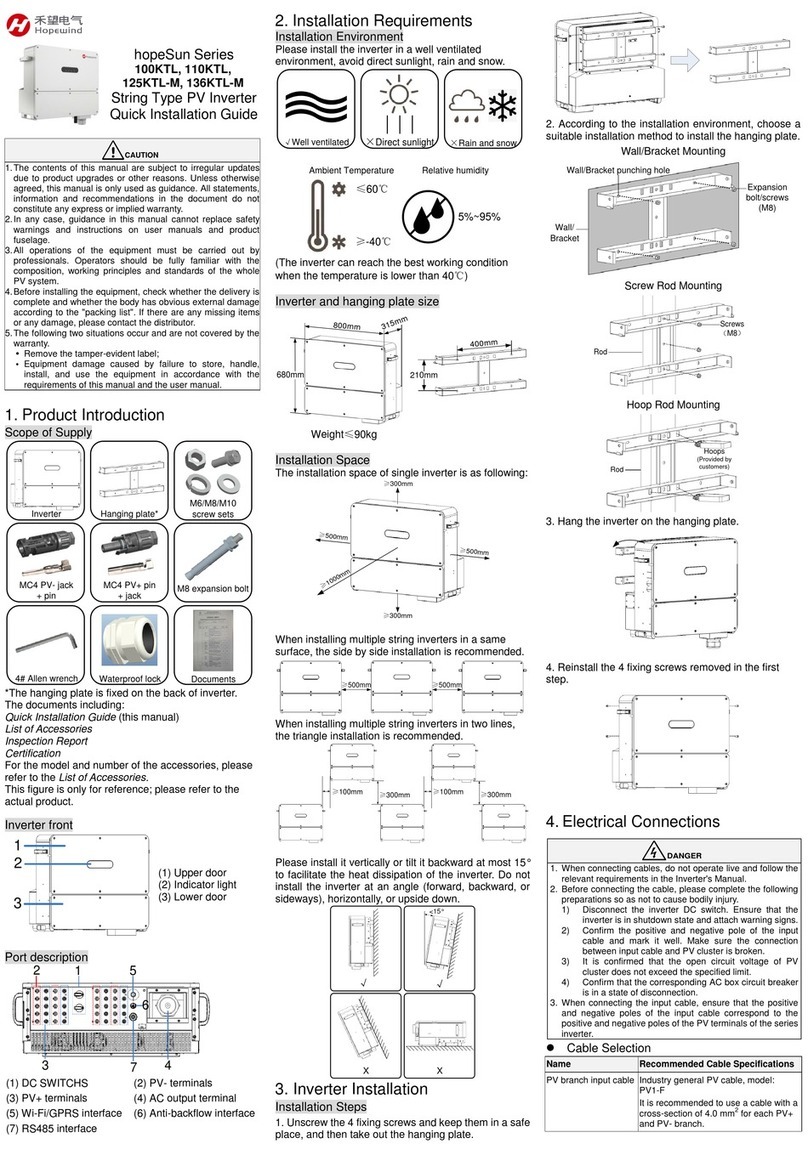
Content
About this manual........................................................................................................................... 5
1 Safety Precautions.......................................................................................................................1
1.1 Transportation.....................................................................................................................................1
1.2 Storage................................................................................................................................................ 1
1.3 Installation........................................................................................................................................... 2
1.4 Operation.............................................................................................................................................2
1.5 Maintenance....................................................................................................................................... 3
2 Product Description.................................................................................................................... 5
2.1 Product Description........................................................................................................................... 5
2.1.1 Schematic Diagram......................................................................................................................... 5
2.1.2 Operation Mode............................................................................................................................... 6
2.2 System Configuration and Application............................................................................................6
2.2.1 Application Description....................................................................................................................6
2.2.2 Supported Grid Form...................................................................................................................... 7
2.3 Naming Rules..................................................................................................................................... 7
2.4 Nameplate label................................................................................................................................. 8
2.5 Machine Configuration...................................................................................................................... 9
2.6 Signs and labels...............................................................................................................................11
2.7 Warning Labels in Inverter..............................................................................................................11
2.8 Technical Data..................................................................................................................................12
2.9 Mechanical Parameters.................................................................................................................. 14
2.10 Ambient Requirements................................................................................................................. 14
3 System installation.................................................................................................................... 17
3.1 Unpack and inspection....................................................................................................................17
3.2 Preparation of installation tools..................................................................................................... 17
3.3 Installation environment requirements......................................................................................... 17
3.4 Requirements for reserved space.................................................................................................18
3.5 Fixing method...................................................................................................................................19
3.6 Electrical connection....................................................................................................................... 20
3.6.1 Cable requirements.......................................................................................................................20
3.6.2 Recommended cable specifications...........................................................................................20
3.6.3 Torque requirements..................................................................................................................... 21
3.6.4 Preparation before operation.......................................................................................................21
3.6.5 Connect the ground wire.............................................................................................................. 22
3.6.6 Connect the AC output cable.......................................................................................................22
3.6.7 Connect the communication cable............................................................................................. 24
3.6.8 Connect DC input cables............................................................................................................. 25
4 Commissioning Guide.............................................................................................................. 27
4.1 Check before starting......................................................................................................................27
4.2 Power on the system.......................................................................................................................28
4.3 Power off the system.......................................................................................................................28
5 Maintenance and troubleshooting........................................................................................ 29
5.1 Maintenance items and cycle........................................................................................................ 29
5.2 Troubleshooting................................................................................................................................30
6 Inverter handling instructions................................................................................................ 35
6.1 Disassembly of the inverter............................................................................................................35
6.2 Replace the inverter........................................................................................................................ 35
6.3 Package the inverter....................................................................................................................... 35
6.4 Scrapped the inverter......................................................................................................................35































